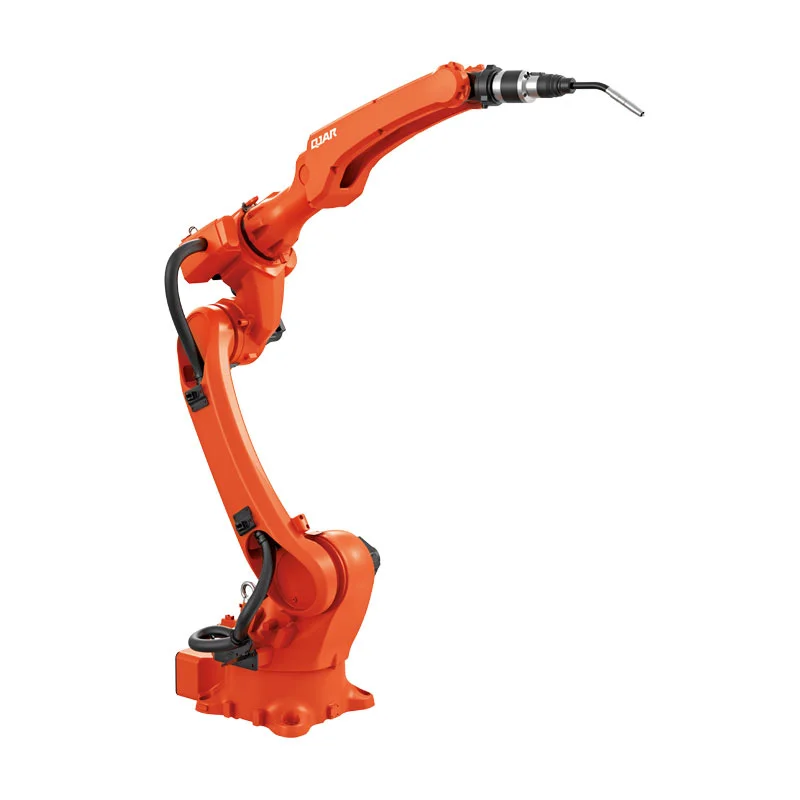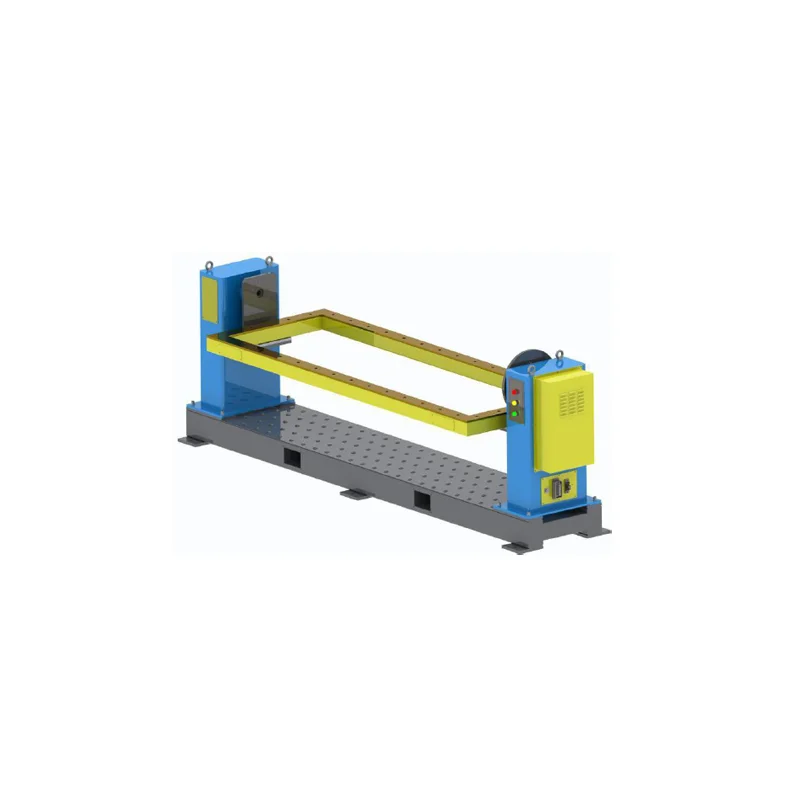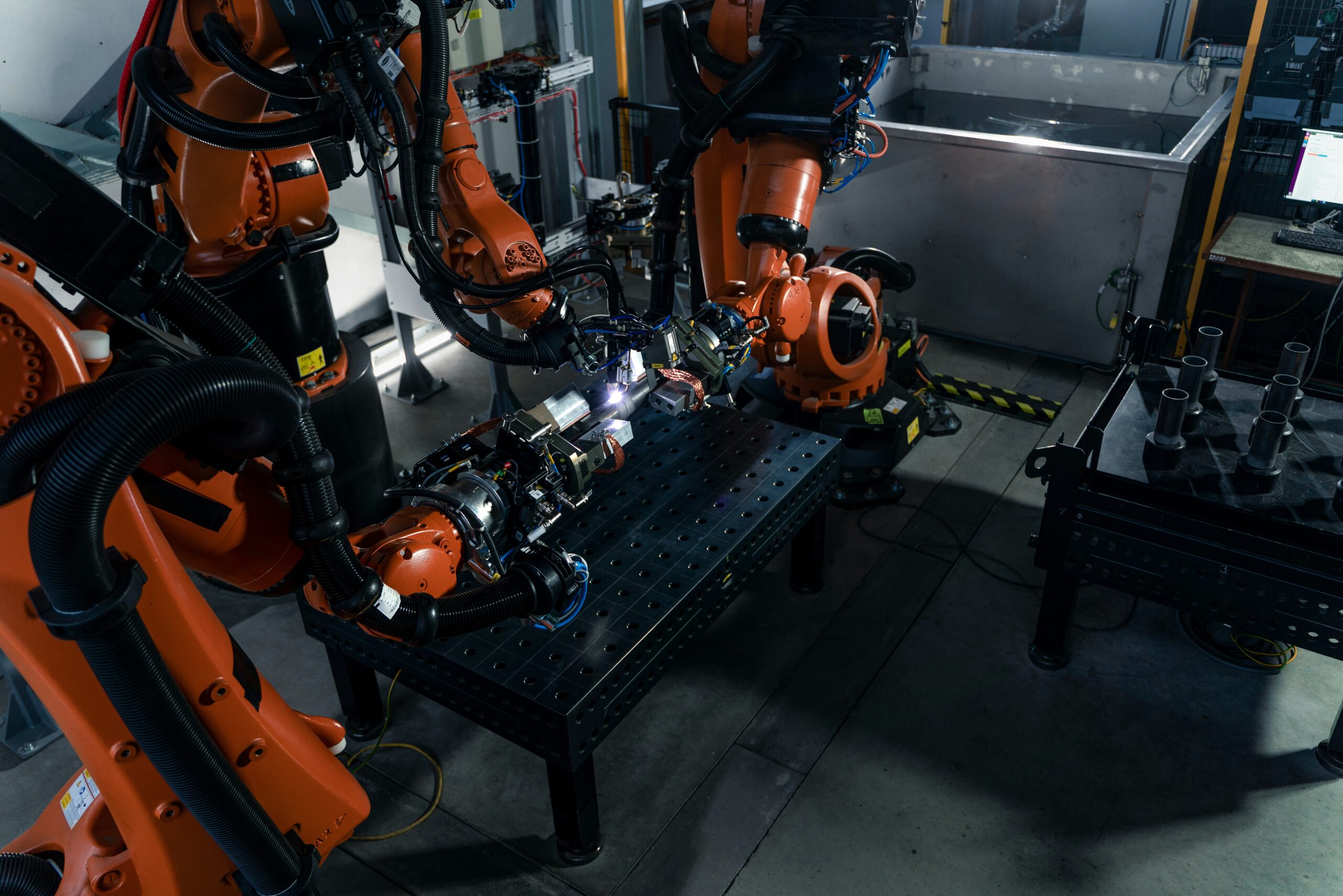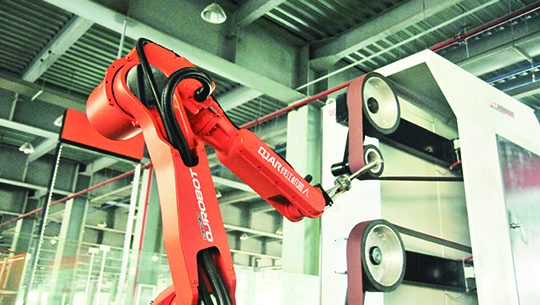Introduction
Automation is an essential component in the realm of advanced manufacturing as it is instrumental in establishing and sustaining efficiency and precision. As a multitude of disruptive technologies propel the industrial revolution, laser welding devices and positioners are indispensable components. Further than optimizing operational processes, these devices enhance both the caliber and speed of manufactured goods. This article examines the integration of the EVS-SWP-ZW series Welding positioners and the QJR6-2000H Laser welding robot, emphasizing the revolutionary nature of their combined functionalities in comparison to conventional welding duties.
An Exposition on Laser Welding Robots
The QJR6-2000H Laser Welding Robot signifies a substantial progression in the field of robotic welding technology. This robot is outfitted with a gear gap adjustment structure, which guarantees enhanced joint accuracy that is critical for welding of superior quality. Antishake optimization and a hollow structure with a U-shaped wrist are two of its innovative design features that increase the rigidity of joint support and decrease operational noise, respectively. The aforementioned characteristics endow laser welding robots with exceptional maneuverability and accuracy. The QJR6-2000H has an armspan of 2014mm and a payload capacity of 6kg. Its repeat positioning accuracy is ±0.08mm, which renders it well-suited for manipulating carbon steel, stainless steel, aluminum, and copper, among other materials. In industries where meticulous attention to detail is required, laser welding robots such as the QJR6-2000H are indispensable due to their precision and adaptability.

A Comprehension of Welding Positioners
For achieving optimal joint quality and accessibility during welding procedures, welding positioners are indispensable. In order to accommodate a wide range of applications, the EVS-SWP-ZW series consists of numerous models with burden capacities between 500kg and 1200kg. Integrated with an AC servo motor and RV precise reducer are the gyration main spindle case, tail case, and welding gyration frame of these positioners. Precise positioning and high gyration stability are vital for complex welding tasks and are guaranteed by this configuration. For instance, the construction of the single axis servo positioner involves the utilization of stress relief annealing on premium sections to guarantee both longevity and steadfastness. The welding positioners‘ precise motion control, which ensures accurate and stable workpiece handling with repeat positioning accuracies of up to ±0.10mm, significantly improves the performance of laser welding robots.

Positioner Integration with Laser Welding Robots
The integration of the EVS-SWP-ZW series Welding Positioners with the QJR6-2000H Laser Welding Robot produces a synergistic effect that effectively amplifies the welding procedure. This integration facilitates accurate workpiece positioning, a critical factor in attaining welds of superior quality. By coordinating the motion of the welding positioner and laser welding robot, each weld is executed at the optimal speed and in the proper alignment, thereby enhancing the welding process’s overall effectiveness and quality. Industries where production speed and repeat accuracy are of the utmost importance place a premium on this coordination.
Case Study: Manufacturing Application in Practice
An instance of this technology in action was witnessed in a project where a single robot control cabinet regulated the integration of a six-axis QJRH4-1 robot, a single-axis positioner, and a robot walking rail. In addition to conserving space, this configuration substantially enhanced efficiency. The QJRH4-1 robot, which is renowned for its dependable operation and superior weld quality, collaborated without difficulty with other machines. The versatility of laser welding robots, in conjunction with effective welding positioners, is exemplified by their compatibility with conventional welding machinery.

An Examination in Comparison to Conventional Welding Systems
In contrast to conventional welding systems, the integration of welding positioners and laser welding robotics presents a multitude of benefits. Conventional approaches frequently necessitate the execution of manual adjustments and alignments, resulting in increased labor and diminished accuracy. In contrast, the automated system diminishes the duration required for setup and manual intervention, thereby resulting in a more efficient and streamlined procedure. In addition, the integration of welding positioners‘ stability and the accuracy of laser welding robots yields welds of superior quality that contain fewer defects, thereby maximizing output and decreasing waste.
Promising Developments and Technological Trends
Integrated robotic technologies will likely become even more prevalent in the manufacturing sector in the future. Potential outcomes of developments in AI and machine learning include the creation of more intelligent and self-governing laser welding devices capable of dynamically adjusting parameters to ensure optimal welds. Moreover, future improvements in welding positioners could incorporate more sophisticated motion control systems, which would enable the execution of movements that are both more intricate and accurate. Further advancements of this nature will consistently expand the horizons of robotic welding, resulting in more efficient, secure, and economical procedures.

Conclusion
The manufacturing welding industry is undergoing a significant transformation due to the integration of welding positioners from the EVS-SWP-ZW series and laser welding robots such as the QJR6-2000H. In addition to increasing productivity and enhancing weld quality, these technologies provide substantial benefits over conventional welding techniques. The role of automation in manufacturing will expand as industries further adopt these cutting-edge technologies. This will result in the development of more inventive and effective production techniques, which will have a profound impact on the industry’s trajectory.
